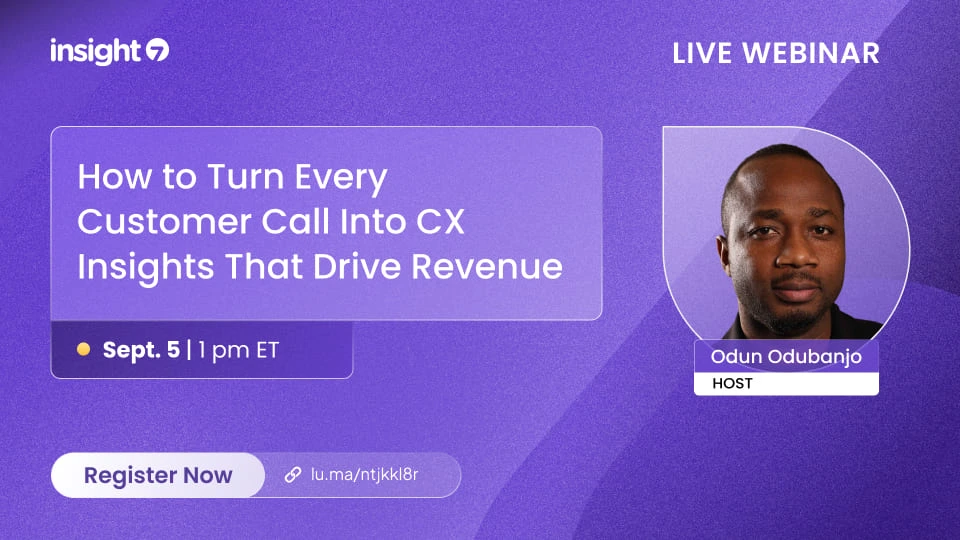Marketing Customer Analytics: Best Practices Guide
-
Bella Williams
- 10 min read
Customer insight optimization is the key to unlocking deeper connections with your audience. As businesses navigate an increasingly complex marketing environment, understanding customer behavior has never been more crucial. By focusing on customer insight optimization, organizations can refine their strategies, enhancing customer satisfaction and loyalty. Through effective analytics, marketers gain the ability to decode rich data into actionable insights that drive decision-making.
This section will explore the significance of optimizing customer insights, emphasizing its role in enhancing marketing effectiveness. By leveraging analytics tools and techniques, businesses can transition from basic data collection to a sophisticated level of insight generation. Ultimately, the goal is to create a customer-centric approach that not only meets market demands but also fosters lasting relationships.
Generate visualizations from your qualitative data. At Scale.

Understanding Customer Insight Optimization
Understanding Customer Insight Optimization requires a methodical approach to data analysis and interpretation. This process begins with gathering customer signals from various sources, including surveys, interviews, and social media interactions. Each interaction offers valuable insights that can significantly shape marketing strategies. As organizations navigate through the wealth of customer data, understanding the patterns and trends becomes crucial in optimizing customer engagement and satisfaction.
Next, it's essential to analyze the collected insights promptly. Companies that prioritize timely interpretation can quickly adapt their strategies, staying ahead of the competition. Improvement in decision-making processes leads to more tailored marketing campaigns that resonate with target audiences. Implementing these insights not only enhances customer relations but also drives overall business growth. By efficiently optimizing customer insights, organizations can ensure they are meeting customer needs and expectations, paving the way for sustained success.
Importance of Customer Insight Optimization in Modern Marketing
In today's fast-paced marketing environment, Customer Insight Optimization plays a crucial role in shaping strategic decisions. Understanding what customers think and feel allows businesses to create targeted campaigns that resonate deeply. By actively engaging with customer feedback and preferences, brands can adapt their offerings in real time, ensuring they remain relevant in a competitive market. This approach not only enhances customer satisfaction but also fosters brand loyalty.
Optimizing customer insights enables businesses to uncover new opportunities for growth. By leveraging data-driven insights, companies can identify emerging trends and adjust their strategies proactively. Additionally, this optimization process supports the alignment of marketing efforts across various channels, ensuring a cohesive customer experience. Ultimately, embracing Customer Insight Optimization leads to better decision-making that drives business success and elevates marketing effectiveness.
Tools and Techniques for Effective Customer Insight Optimization
To enhance Customer Insight Optimization, businesses need to utilize a combination of tools and techniques that streamline the process of gathering and interpreting customer data. Essential methods like customer surveys, interviews, and data analysis software are vital for obtaining actionable insights. These tools help organizations identify trends, preferences, and pain points that influence customer behavior.
Additionally, employing advanced analytical frameworks can help extract deeper meanings from customer feedback. Techniques such as sentiment analysis and predictive analytics facilitate the transformation of raw data into strategic advantages. Integrating these methods not only increases efficiency but also improves collaboration across teams by providing a unified view of customer data. Ultimately, effective Customer Insight Optimization leads to more informed decision-making and helps businesses stay ahead in competitive markets.
Evaluate Performance on Customer Calls for Quality Assurance.
Implementing Customer Insight Optimization Strategies
Implementing Customer Insight Optimization Strategies requires a structured approach to fully harness the power of customer analytics. The first step involves data collection and integration, where teams must gather insights from various platforms and channels. This phase is crucial because it allows for a comprehensive view of customer behavior, preferences, and trends. Effective integration of data sources ensures that all relevant customer signals are considered in decision-making processes.
Following data collection, the next phase centers on analysis and interpretation. Here, teams analyze the collected information to identify patterns and correlations that can guide optimization strategies. It is important to draw actionable insights that move beyond mere data presentation. Finally, the last step focuses on translating insights into actionable strategies, aligning marketing efforts with customer expectations and demands. By thoroughly implementing these strategies, businesses can optimize their engagement efforts and enhance customer satisfaction in an increasingly competitive landscape.
Step 1: Data Collection and Integration
Effective data collection and integration form the foundation for successful customer insight optimization in marketing analytics. Begin by identifying data sources, which may include customer surveys, social media interactions, and sales records. Collecting diverse data helps in understanding customer behavior, preferences, and pain points more comprehensively. It’s vital to ensure that this data is captured consistently to facilitate accurate analysis later in the process.
Once data is gathered, the next step is integration. Combining data from various sources into a coherent structure allows for a unified view of customer interactions. Utilize data tools that offer seamless integration capabilities to streamline this step. This integrated data framework is crucial for extracting meaningful insights and developing targeted strategies. It's essential to prioritize data quality and relevance throughout the collection process to enhance the accuracy of subsequent analyses. Ultimately, a robust data collection and integration strategy paves the way for unparalleled customer insight optimization.
Step 2: Analysis and Interpretation for Optimization
In the process of Customer Insight Optimization, analysis and interpretation play crucial roles. Data collection generates vast amounts of information, yet raw data holds no value until it is interpreted meaningfully. This stage involves breaking down data into digestible parts, uncovering patterns, and identifying trends that influence customer behavior. Essentially, it transforms complex data into actionable insights that can guide decision-making processes.
To execute effective analysis and interpretation, consider the following steps:
Contextualizing Data: It’s essential to place data in its proper context. Understand what specific customer experiences or events influenced the data.
Identifying Key Patterns: Seek recurring themes or patterns across your data set. Recognizing these can lead to better understanding customer pain points.
Summarizing Insights: After drawing out key patterns, summarize your findings to clearly communicate the insights to stakeholders. This can aid in refining marketing strategies effectively.
By focusing on these aspects, analysts can optimize customer insights, ultimately leading to better marketing strategies and improved customer satisfaction.
Step 3: Actionable Insights and Strategy Implementation
Actionable insights derived from customer analytics serve as a bridge between data and strategic implementation. Once organizations understand their customers, they can take measured steps to apply these insights effectively. The process begins by prioritizing key findings that reveal customer preferences and pain points, ensuring alignment with overall business goals. By employing Customer Insight Optimization, brands can enhance their decision-making, creating solutions that resonate with their audience.
To implement strategies based on these insights, businesses must consider three pivotal actions. First, establish cross-departmental collaboration to ensure insights are shared and utilized across teams. Second, design targeted marketing campaigns that reflect the voice of the customer, tailored to specific segments. Lastly, continuously monitor the impact of these strategies, allowing for real-time adjustments and optimizations. This iterative process not only improves customer engagement but also fosters lasting relationships, ultimately driving business growth.
Conclusion: Elevating Marketing Efforts with Customer Insight Optimization
In conclusion, effective marketing relies heavily on Customer Insight Optimization to truly connect with target audiences. Understanding customer preferences and behaviors provides businesses with vital information to craft marketing strategies that resonate deeply with consumers. This understanding empowers organizations to make informed decisions, ensuring that marketing efforts are not only relevant but also impactful.
Additionally, optimizing customer insights can streamline collaboration across teams, improving how insights are shared and utilized. By integrating this optimization into daily practices, companies can adapt quickly and responsively to market trends, thereby gaining a competitive edge. Embracing this approach ultimately transforms data into actionable strategies that elevate overall marketing performance.







